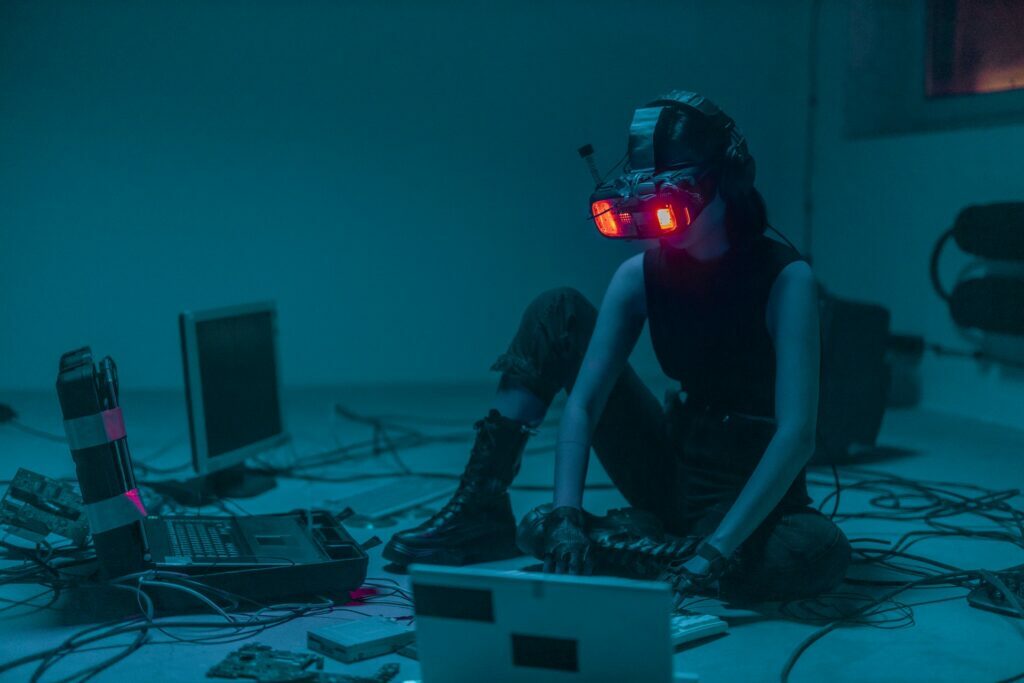With tremendous innovation advancements, the gaming business has been one of the fastest growing during the past 20 years. The rate of progress in the gaming industry continuously smashes records, and innovations keep things more exciting and enjoyable than ever. In terms of designs, we have witnessed a transition from pixel artistry to 2D and 3D models. We will study cloud gaming today.
A type of web-based gaming known as cloud gaming — also known as gaming on demand, gaming as a service, or game streaming — runs computer games on remote servers and streams them directly to a client’s device, or, more informally, involves playing a game from a distance from the cloud. It differs from the typical gaming method in which a client’s computer game control centre, PC, or mobile phone runs a game locally.
You can access Cloud games on Windows PCs by logging into your Microsoft account in the Xbox app.
You must download the Xbox Game Pass app for Android devices from the Google Play or Samsung Galaxy store.
It closely resembles Netflix or another streaming platform. The primary difference is that the server hosting the video transmission may also receive and react to your criticism. That suggests you don’t need to bother with another Xbox Series X, PlayStation 5, or bulky RTX 30-series graphics card. All you truly need for cloud gaming is a reliable web connection.
Cloud Gaming: How really does it work
For the most part, cloud gaming requires a membership that is paid on a monthly or annual basis in order to access the content. Games must be purchased in addition to that cost with specified administrations.
Dedicated or electronic apps are commonly provided by cloud gaming administrations for game streaming. For instance, workstation PCs are used to play Google Stadia through a web application. Google also offers a browser application for Apple devices that allows users to play Stadia in Safari. The Play Store is where Android’s committed application is distributed. The streaming meeting starts when players tap or snap the Play button in any case.
Cloud web-based features, in addition to the traditional mouse and console setup, are frequently compatible with the newest regulators through Bluetooth. You can also choose to use on-screen controls on touchscreen devices, such as smartphones and tablets. In fact, all of these information sources are compatible with Google Stadia, with the exception of Chromecast Ultra, which as of right now requires Google’s $70 Stadia Controller.
You basically approach a gaming PC on a server farm when using the cloud.
Cloud Gaming: Know its history

Although cloud gaming has been around since the latter half of the 2000s, it was not implemented until much later when technology and internet rates had improved.
In June 2010, OnLive, a major cloud gaming administration, launched. Like Google Stadia does now, it made use of a tiny game streaming “miniature” console and a special regulator. It was also supported on Android tablets and smartphones, Windows and macOS via an application, Nvidia’s unique Shield, and there are countless other platforms out there.
The first Borderlands and Darksiders were among the titles available on OnLive at the time for consoles. These games functioned with graphic quality comparable to that of conventional frameworks, but the innovation was still in its infancy and caused dormancy concerns in particular games. In any case, internal problems led to a shift within the company, which raised the possibility of its demise and the transfer of its resources to Sony.
At the same time, Gaikai was released by game designer David Perry (Earthworm Jim, MDK), although it included two completely different models. In an effort to compete with computerised deals at the time, one assistant provided gamers with streaming demos of websites that they could try out and later purchase from nearby retailers. The following version streamed complete games purchased from distributors to websites, smart TVs, and even the WikiPad.
Cloud Gaming: Purposes behind its Popularity
The biggest problem holding back cloud gaming is the foundation. OnLive and Gaikai, two previous initiatives, couldn’t compete because they lacked the current services’ breadth and transmission power. Cloud networks from Microsoft, Google, and Amazon have enabled global access, enabling various cloud gaming platforms to spread and expand swiftly to diverse regions.
Beyond the technical explanation, cloud gaming is increasingly popular because it functions. While the early adopters of cloud gaming were experimenting with new technology, services like OnLive and Gaikai lacked the exposure and capital to challenge the status quo, despite the fact that fans may have bought in.
The world’s largest tech companies are currently funding cloud gaming, enabling decreased inactivity, higher casing rates, and a more efficient arrangement process. Services like Stadia and GeForce Now have mastered the fundamentals of the display, allowing them to promote the more practical benefits of cloud gaming.
You needn’t worry, for instance, about having excess space. You avoid 100GB downloads for the most recent Call of Duty and only download the real-time feature’s application. In essence, you don’t need to update your components. You can just buy the game and start playing right away, saving $500 on another control centre that can deliver 4K games at 60 frames per second.
Which Cloud Gaming Administration is the most ideal choice?
Your choice in cloud gaming administration will mostly come down to your preference for particular features or games, but there are a few factors that can make making your choice a little bit easier.
Players of consoles: Xbox Cloud Gaming on Xbox One/Series X or PlayStation Now on PS4/PS5 are your options if you need to enjoy cloud gaming on your control centre. You don’t need to own a PlayStation to use PlayStation Now, which is a pure web-based gaming capability for those command centres and Windows 10 PCs. Microsoft’s Cloud Gaming administration offers two streaming options: newly released games and a selection of games from the Game Pass catalogue.
PC users: Although they have a variety of options, GeForce Now is unquestionably fantastic. It is compatible with the PC games you already possess, and if you buy a local plan, you may still play those games without paying for them. If you need a powerful PC in the cloud, Shadow is a fantastic second choice. Even though Stadia performs admirably, you should still pay the full price for the games you want to play.
Cross-stage continuing interaction: Microsoft has demonstrated the best commitment to cross-stage play out of the three major control centre groups. We assume that this will continue with Xbox Cloud Gaming, as Xbox One and PC users may currently play particular games with Switch and PS4 players. In the new control centre, more options ought to become available. With the anticipation of free games like Destiny 2, which do not currently support cross-play, Stadia is ideal.

Kunal Aneja is the Head of DataBonker.com, leading the platform’s vision to provide informational and educational resources on Education, Career, Jobs, Data Analytics, Cloud Computing, AI, and Technology. With a deep passion for knowledge-sharing and innovation, Kunal is dedicated to delivering insightful, research-driven content that helps individuals navigate their professional and academic journeys. Under his leadership, DataBonker continues to evolve as a trusted hub for learning resources, career guidance, and tech insights.
📩 **Stay Ahead with DataBonker!**
Join our newsletter and get the latest insights on "Education, Admissions Guidance, Career Growth, Latest Job Trends, and Technology Updates** – straight to your inbox! 🚀
